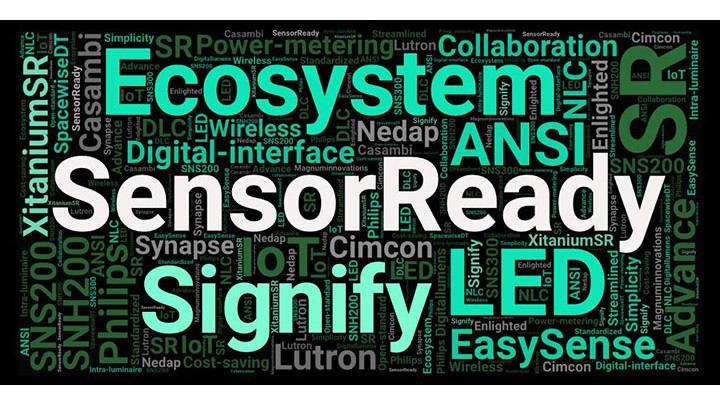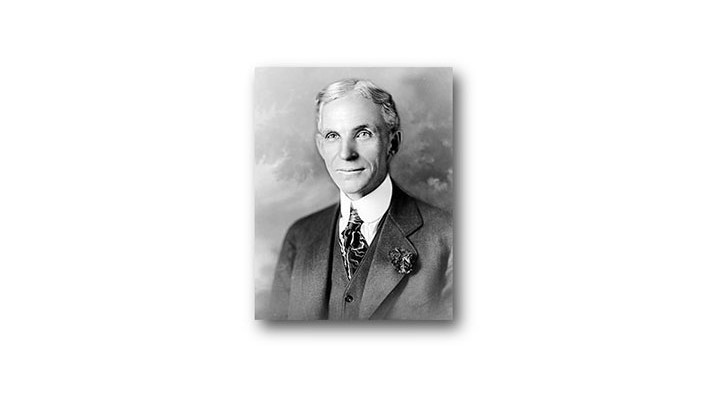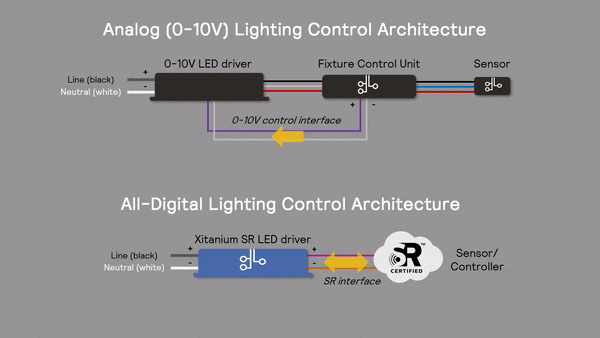
A couple of months ago, I was preparing a presentation for an internal business meeting to celebrate the commercial release of Signify’s FlexTune System. This solution breaks new ground in terms of how it incorporates key attributes of an open-standard, wireless digital control solution for commercial human centric lighting (HCL) system—control precision, simplicity, and flexibility—in a very cost-effective way. You can read more about this system in my previous blog. By organizing this meeting, I wanted to recognize the extraordinary collaboration within Signify as well as with key third-party partners for this important milestone.
As I was preparing for the presentation and searching online for words of inspiration, I came across the following quotation from Henry Ford1, the founder of the car company that bears his name as well as a champion for the assembly line technique of mass production. He once said:
Coming together is a beginning,
Keeping together is progress,
Working together is success.
At that moment I knew right away I had what I was searching for. From the expression of the people who were at the meeting, I can see that these words helped energize them to look for more collaboration opportunities ahead.
Over time, I started to realize just how applicable these words are to the lighting industry and for today’s connected lighting market specifically.
1 https://addicted2success.com/quotes/38-memorable-henry-ford-quotes/

If you contrast what the lighting industry was a decade of ago to what it is today, I think most of you would agree that it is experiencing an unprecedented transformation and disruption. Especially with the growing adoption Internet of Things (IoT) technologies, there is greater need for personalized control, network connectivity, remote monitoring, and data analytics. As the result we are witnessing more technological innovations, a new business model (i.e. lighting as a service), and a mind-boggling number of lighting control solutions. To put this in a better context, for the North America market, the number of networked lighting control (NLC) solutions that are listed by Design Light Consortium (DLC) in its Qualified Product List (QPL) has grown from 34 entries a year ago to 39 entries this year—a 15% increase. Being on this list matters a great deal because all the qualified NLC solutions are eligible for additional utility rebates, which make those eligible products more affordable. This list does not even include all the NLC solutions that are commercially available today for the North America market. I know this because a couple of the third-party partners I’m working aren’t on the list yet!
With this dynamic and fast change of pace we are witnessing (raise your hand if you agree with me the metaphor “changing at the speed of light” is appropriate here), you may be wondering how can anyone—lighting manufactures, specifiers, agents, distributors, installers, end customers—keep track of all the various lighting control solutions that are out there?
This is where Henry Ford’s quote about working together came into sharp focus for me. This mindset is what I’ve experienced firsthand with the North America luminaire OEMs and lighting control companies that I am working with. Many of them, including Signify, are embracing a shared vision of common technical standards to ensure interoperability between luminaires and different control systems. It doesn’t matter if the NLC is intended for basic room-based control or the fully automated indoor and outdoor applications, every luminaire OEM, every lighting control company, and every buyer and every customer can benefit from greater collaboration.

This is the vision that Signify had five years ago when it unveiled the Sensor Ready (SR) digital interface. This is an important technology that ensures full interoperability between the LED driver inside the luminaire and third-party NLC solutions. In the other words, the SR interface provides the two-day digital traffic lane inside a modern connected LED fixture. The physical connection of the SR interface is over two low-voltage wires. These two wires provide DC power to the lighting controller/sensor.
This setup eliminates the extra control unit typically found inside the luminaire (see diagram below). The main benefits are:
Today, the SR digital interface, and the growing ecosystem that Signify has created, has attracted a growing number of third-party NLC companies as well as the luminaire OEMs (for a full list of Signify’s certified SR partners from around the world please click here). The appeal of SR digital interface is understandable. The appeal for the luminaire OEMs and the lighting designer is the flexibility in pairing the LED fixtures with a wide selection of compatible NLC solutions. This “plug and play” concept also eliminates the guessing work for the lighting designers and the end customers. Not to mention the cost saving (by removing the extra control unit) that I’ve mentioned earlier.
Comparison of Analog Driver and Digital Driver with SR digital interface

When I brought up this topic in my recent conversation with Jamie Britnell, Director of Product Management, Synapse Wireless, he echoed the same sentiment. “The SR digital interface,” he observed, “greatly simplifies the collection of detailed power data from the LED driver in addition to providing full control of the luminaire.” Furthermore, he added that “with the Advance Xitanium SR LED drivers from Signify and embedded lighting controller such as SimplySNAP from Synapse Wireless, the need for a field-installed, retrofit lighting controller in the luminaire is eliminated”. The key benefits to his customers “are cost savings and detailed power usage reports across groups of luminaires or even the entire facilities”.
Furthermore, Mark Milligan, SVP Marketing of Enlighted, one of the key players in the IoT space and an early adopter of the SR digital interface, shared the following thought with me:
“We’ve worked with Signify for many years, and our cooperation together helped lay the foundation for connected lighting by reducing the cost and complexity of creating intelligent light fixtures. This has also led to growing standardization in the industry including standards like D4i and Zhaga. We’ve been pleased to build upon these successes with more recent work together on human centric lighting, where Enlighted recently announced a new, simple method for controlling the intensity and color temperature of white LED lighting. This makes it easy to create lighting scenes and experiences that are task-specific, and appropriate for different times of the day.”
Through the support of key partners such as Enlighted and Synapse Wireless, Signify has successfully built a strong global ecosystem around the SR digital interface. Yet this is not the time for Signify to sit on its laurels. In pursuit of its mission statement—to unlock the extraordinary potential of light for brighter lives and a better world—Signify continues to seek out new technology and business partners.
A good example is the latest partnership with Silvair, which, according to its website, is an “American company with Polish roots that builds software solutions for the Internet of Things (IoT).” The SR digital interface enables the digital driver Xitanium SR LED driver to become a native node in a wireless Bluetooth mesh network. This configuration offers not only dimming control, but also color tuning as well as energy metering, diagnostics and maintenance. “This technology partnership,” according to Szymon Slupik, President and CTO of Silvair, “will bring a plethora of Bluetooth mesh-based NLC solutions that are easy to commission, and effectively more affordable, to the Signify SR ecosystem.”
In summary, all of us in the lighting industry should view connected lighting as a long journey instead of a destination. There are unexpected discoveries, new lessons to learn from, unexpected roadblocks to overcome, and new partnerships to form. Unbeknownst to most of us, the words from Henry Ford from half a century ago—coming together, keeping together, and working together—represent the blueprint that will help guide the lighting industry as it embraces all the disruptive changes. With the SR digital interface as the foundation for both indoor and outdoor commercial lighting systems, the future couldn’t be brighter.

November 14, 2023
How lighting technology can help reduce risks to migrating birds